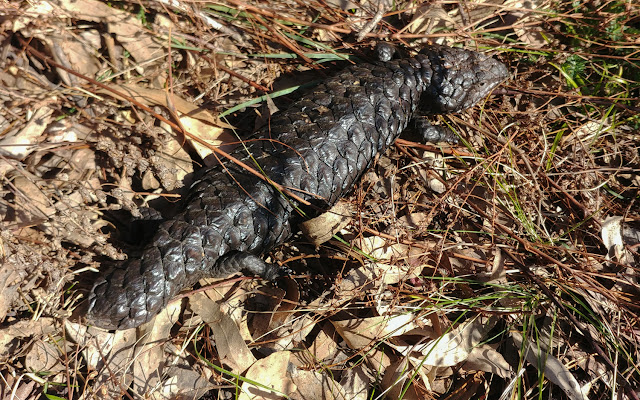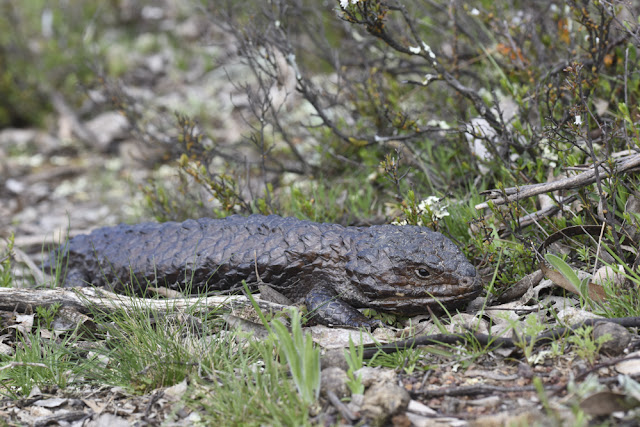A New Spring
By our calendar it is still winter in Canberra, but the wildlife have considered it spring for a couple of weeks now and they are showing the signs.
This Shingleback was sunning itself in a wood the other day, the first of two I saw that day and the fourth so far this Spring. They all lay perfectly motionless with their bodies spread wide to absorb the sun's heat.
This Golden-headed Cisticola popped up out of the grass as I passed through an ungrazed paddock overgrown with weeds. He gave a few alarm calls at my presence then dropped back down and disappeared into the grsss.
And the first Tawny Frogmouths have laid their eggs. The males are now incubating all day, for the next four weeks, remaining still to avoid detection by predators, such as Brown Goshawks, a pair of which were displaying over this birds nest wood.
The frogmouths share incubation during the night, but during the day, this bird's partner will remain similarly still in her nearby roost all day, watching for predators - and watching me as I pass by.












.jpg)
.jpg)
.jpg)
.jpg)
.jpg)





